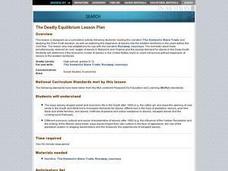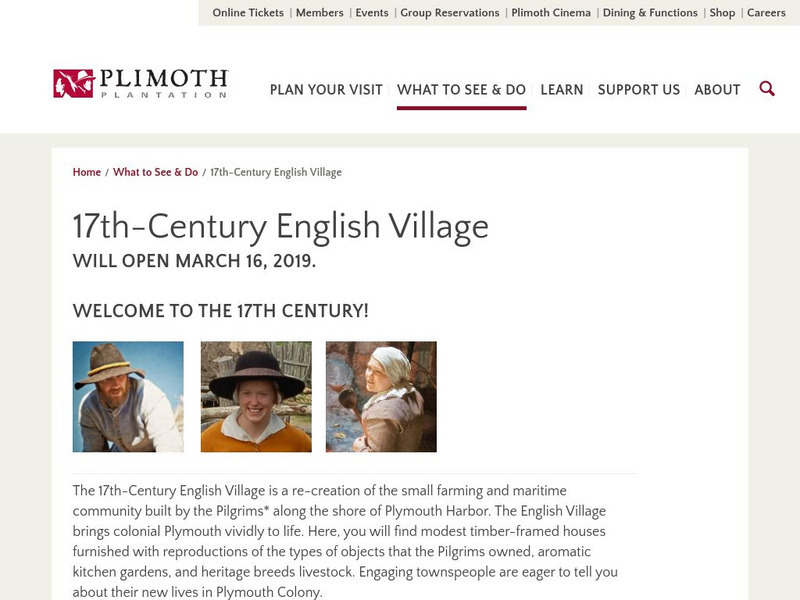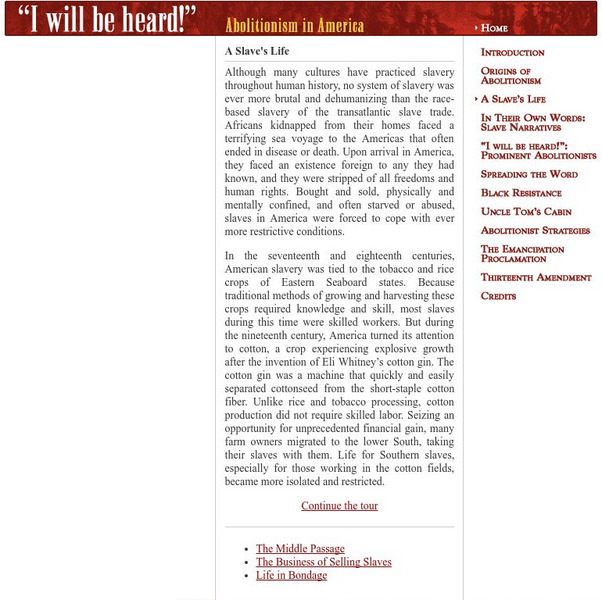Digital History
The New Nation
George Washington and the new nation of the United States of America faced many problems in their inaugural years. Use this worksheet as a straightforward approach to learning about the reasons the country was experiencing a lack of...
Curated OER
What price Freedom! Civil War and Reconstruction
Fifth graders become familiar with the events of Reconstruction and the 13th, 14th, and 15th amendments. In this reconstruction lesson plan, 5th graders work in pairs where each student creates a building with blocks and draws it. Their...
Curated OER
Cambodian New Year
Students compare and contrast the New Year celebration in Cambodia to the celebration in the United States. They mathematically determine the amount of beans added to the "mountain" during the three day celebration.
Curated OER
Worksheet #28 Questions - American Deep South
In this American Deep South worksheet, students examine their knowledge through ten fill in the blank questions that relate to the aforementioned topic.
Curated OER
Children and Slavery Document Search
Learners review the causes of slavery, the Middle Passage, triangular trade and the spread of slavery throughout colonies. They work in small groups and search documents in order to find the answers to a question and document packet.
Hubbard's Cupboard
The Pilgrims' First Thanksgiving
Pupils explore holidays by participating in class singing activities. In this Thanksgiving history instructional activity, students discuss the importance of Thanksgiving Day and read several poems which discuss the history of...
Curated OER
African American Emigration: Turner and McNeal
Learners discuss reasons why African Americans may have wanted to emigrate from the United States followig the Civil War. They complete a Venn diagram noting the differences between proposals by Marcus Garvey and Henry McNeal Turner.
Curated OER
The Deadly Equilibrium Lesson Plan
Students read a narrative "The Domestic Slave Trade" and answer questions about states' slave trading. They read another narrative "Runaway Journey" and answer questions about runaway slaves. They discuss the impact of the slave trade on...
Curated OER
Inter / Intra Personal Lesson Plan
Middle schoolers identify the causes of the American Civil War. Using the internet and print sources, they read about the causes and personal backgrounds of those who participated in the war. They choose a character from the time...
Curated OER
Mastering the Document-Based Essay Question
Students use a primary source document from the Civil War period of history in order to derive meaning for an essay question. The essay is based completely on the document with no other research to support the content.
Curated OER
Slavery in the United States
Students research slavery in the United States and present their findings as a newscast with appropriate visuals to the class.
Curated OER
Living History - Civil War
Eighth graders, after researching antebellum North Carolina and the role of North Carolina in the Civil War, write, edit, publish, and produce their own plays.
Curated OER
Graphing and Demography: The Domestic Slave Trade
Students create graphs or charts based on the data a narrative imbedded in this plan. They make them either by hand or by using Excel or a similar database program. This lesson utilizes technology in a meaningful way.
Curated OER
History of Water Use in Hawaii
Students research water use in Hawaii and use primary and secondary sources to determine the impact of restoration of the L?l?kea stream on stream flow, water quality, habitat and biota.
Arizona State University
Archaeological Research Institute: A Walking Tour of Plimouth Plantation
A visual exploration, supported by interpretive text, of Plymouth Plantation as it existed in the 1600s. Includes photographs of buildings, a wigwam, European and Native American clothing, and tools used.
The Henry Ford
Living Under Enslavement: African Americans on Hermitage Plantation
This virtual tour of the slave quarters of the Hermitage Plantation tells of the family life of slaves, their skills, and their resistance to the institution of slavery.
National Endowment for the Humanities
Neh: Edsit Ement: Factory vs. Plantation in the North and South
This lesson helps students study life in the United States in the years before the Civil War. Students will gain a better understanding of why people grew willing to fight to defend their way of life. Many of the documents students will...
Other
Monticello: A Day in the Life of Thomas Jefferson
Discover citizen and U.S. President Thomas Jefferson's daily routine, habits, inventions, and the home that he designed for his Virginia plantation.
Other
Plimoth Plantation: Make It at Home
As part of the comprehensive Plimoth Plantation site, this page gives directions on how to create games that the Wampanoag children and Pilgrim children might have played. Find pictures that show how to make these games.
PBS
Pbs: About All You Can Eat: A Feast at Plimouth Plantation
A lesson plan in the culinary delicacies of the Plymouth Plantation in 1627. In this integrated lesson plan, students examine the history of foods eaten during this colonial era and prepare an actual meal based on what they have learned....
CommonLit
Common Lit: "Life of a Slave on a Southern Plantation" by Bird Brain History
A learning module that begins with "Life of a Slave on A Southern Plantation" by BirdBrain History, accompanied by guided reading questions, assessment questions, and discussion questions. The text can be printed as a PDF or assigned...
Digital History
Digital History: Slave Labor
Not all slaves worked in the fields. Read about the jobs of many skilled workers who were slaves in the South. Read also about the slaves who were field hands and find out about the harsh labor conditions they endured.
Other
Plimoth Plantation: 1627 English Village
This site describes what you might see if you make a trip to Plimouth Plantation.
Cornell University
Cornell University: Library: I Will Be Heard: A Slave's Life
A brief look at how slavery in America was tied to the crops grown in the South. See how the need for skilled workers was decreased and the use of unskilled slaves increased with the introduction of the cotton gin.






















